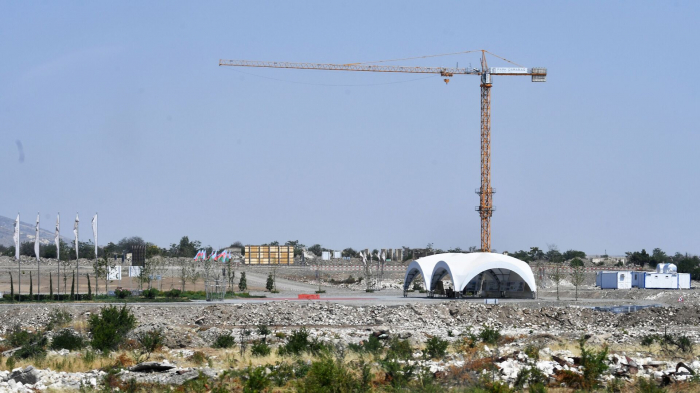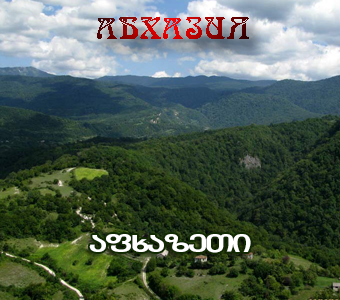17.07.23 11:20

All of the separatist entities in the South Caucasus were ugly and logistically problematic in the first place. They were simply expensive and inconvenient to supply. Because of this, any economic activity in the separatist entities was initially simply unprofitable in the conditions of severing ties with the main territory of Georgia or Azerbaijan, respectively.
Another typical example is Samachablo, the former South Ossetian Autonomous District, which until the opening of the Roki tunnel in the last years of the Soviet Union had no direct communication with the North Ossetian ASSR within the RSFSR and Russia. All supplies to Tskhinvali and other parts of Samachablo went through the plains of Georgia, primarily Shida-Kartli and Gori.
After the emergence of the separatist pseudo-state entity in Samachablo, the so-called "South Ossetia", and after the territory was occupied by the Russian Federation in 2008, the difficulties and high cost of supply through the Roki tunnel made all imported goods in this occupied Georgian region unreasonably expensive. Especially against the background of total poverty of the local population under the separatist regime.
Also there was no possibility to export and profitably sell products produced in the Tskhinvali region in other regions of Georgia, and in Russia these products turned out to be uncompetitive again due to remoteness and significant transport costs. As a result - poverty and chronic subsidisation of this territory, closure of almost all production facilities, mass unemployment and catastrophic outflow of population. Living in a "logistical separatist hole", even if it was financed by the occupiers, proved simply unbearable for many Ossetians.
The same is true of Azerbaijani Karabakh. For centuries, the mountainous regions of Karabakh, which had a certain percentage of the ancient Albanian Christian population assimilated by Armenian aliens, were supplied from the plain of Azerbaijan and sold their products there as well. The same situation persisted during the years of the USSR - the Nagorno-Karabakh Autonomous Oblast of Azerbaijan was supplied exclusively from the rest of Azerbaijan, and not through Lachin from the Armenian USSR. The Karabakh Armenians themselves considered their nearest capital city to be Baku, not Yerevan.
With the onset of the separatist movement for "miatsum", the Karabakh Armenians also found themselves in a logistical dead end. Only the plundering of the subsoil and other natural resources of Azerbaijan in the occupied territory of Karabakh had a certain effectiveness for the Armenian occupiers who seized this territory during the first Karabakh war. Any other economic activity, given the huge costs of transport and logistics from the Republic of Armenia, was simply unprofitable.
As a result, Armenians started to leave Karabakh from the first years of occupation and the process of devastation only increased further. Now there are not 120 thousand Armenians left in Karabakh (as the separatists claim), but at best 25-30 thousand.
However, the re-integration of Karabakh, including the Armenian-populated areas, into a unified Azerbaijan is an irreversible process. And finally, for the first time, the supply of Karabakh can begin through "natural" routes, which will make the need for the Lachin road for the supply and livelihood of the Karabakh Armenian community minimal.
This is Azerbaijan's proposal to start supplying the Armenian population of Karabakh with humanitarian goods not through Lachin from the territory of the Republic of Armenia, but via a much more favourable route from the economic and logistical point of view - from the rest of Azerbaijan via the Aghdam-Khankendi road. This proposal was voiced in Brussels, where a trilateral meeting was held between President of Azerbaijan Ilham Aliyev, Prime Minister of Armenia Nikol Pashinyan and President of the European Council Charles Michel. And this proposal was immediately supported by the European Union represented by Charles Michel.
Stating the importance of the Lachin road, Charles Michel also noted Azerbaijan's readiness to equally ensure the delivery of humanitarian aid via Aghdam. "I consider both options important and I call for humanitarian supplies from both sides to meet the needs of the population" - stated Charles Michel.
Most interestingly, Armenian nationalists and "Artsakh" separatists who accuse Azerbaijan "of blockade and genocide" reacted hysterically and extremely negatively to the proposal to supply Karabakh Armenians via Aghdam. Although, it would seem, they should have rejoiced, because Azerbaijan wants to feed and provide Karabakh Armenians, whom it considers its citizens, and therefore "death in a blockade from hunger and cold" does not threaten them in any way. But here we get a state of affairs that goes against the interests of separatists - the separatist myth about "Azerbaijan's intention to genocide Armenians" crumbles to the ground.
Thus, "natural" logistics in the Karabakh region of Azerbaijan may soon work (or rather resume after decades of occupation) for its inhabitants.
Movement through the Lachin border crossing point will be possible for citizens (from Karabakh Armenians) who do not want to take Azerbaijani citizenship, only in one direction - to leave.
All other logistics for Khankendi, including the import of foodstuffs and everything necessary for life will be organised through Aghdam, as it was in the Soviet times. Also, those Karabakh Armenians who accept Azerbaijani citizenship and automatically receive all the rights associated with it will be able to move throughout the territory of Azerbaijan without any problems through Aghdam.
The start of natural logistics for the Karabakh region of Azerbaijan gives hope that sooner or later the same natural, not ugly separatist logistics will start to work in relation to the Tskhinvali region and Abkhazia.
Tskhinvali will be supplied through Shida-Kartli and Gori, while Sukhumi and Abkhazia will be supplied through a bridge on the Inguri River from the rest of Georgia. And the sooner the remnants of "Artsakh" separatism in Azerbaijani Karabakh are finished, the sooner the reintegration of Abkhazia and the Tskhinvali region into a unified Georgia will begin.
Grigol Giorgadze
Read: 244
Write comment
(In their comments, readers should avoid expressing religious, racial and national discrimination, not use offensive and derogatory expressions, as well as appeals that are contrary to the law)
News feed
-
The struggle of two empires for Georgia - the heat of events is only accelerating
20:4904.05.24
-
Georgian Parliament holds yellow security level
12:0903.05.24
-
18:0002.05.24
-
Georgian Parliament Speaker, EU official review cooperation, integration
17:3202.05.24
-
US State Department condemns foreign influence bill advanced in Georgian Parliament
16:4002.05.24
-
Georgian Economy, Finance Minister review cooperation, projects with World Bank Executive Director
16:0002.05.24
-
15:0502.05.24
-
14:2902.05.24
-
13:5202.05.24
-
Austrian Airlines launches Vienna-Tbilisi flights
13:0002.05.24
-
12:1002.05.24
-
Health Ministry: Eight hospitalized during protest, patients' health conditions are satisfactory
11:2202.05.24
-
Ursula von der Leyen: Georgian people want European future for their country
10:1602.05.24
-
Is Echmiadzin opposed to peace in the South Caucasus? Once again...
18:5701.05.24
-
Georgian Parliament official highlights “threats” of external interference among “European public”
18:0001.05.24
-
17:0801.05.24
-
16:2701.05.24
-
15:2701.05.24
-
Josep Borrell Responds To The Situation In Georgia
14:4301.05.24
-
Tbilisi Mayor says Europe needs worthy, strong states
14:0001.05.24
-
Georgia imported 265 tons of lentils in January-March
13:3101.05.24
-
12:5001.05.24
-
12:0501.05.24
-
11:3101.05.24
-
10:5001.05.24
-
Yellow level of security regime to be again in effect in Parliament today
10:1601.05.24
-
Armenians in the Ottoman Empire: What Was, What Could Have Been and Today's Reality
7:5501.05.24
-
18:0530.04.24
-
Vice-President of the European Commission: I advised Ilia Darchiashvili to review our directive
17:1030.04.24
-
The Parliament elected Giorgi Kalandarishvili to the post of CEC Chairman
16:1530.04.24
-
15:4030.04.24
-
According to the government's decree, May 7, 8, and 10 were declared public holidays
13:5930.04.24
-
13:2130.04.24
-
Geostat: Georgia's economy grew by 8.2% in March
12:5030.04.24
-
President: Today, some people want to portray our 30-year-old allies and partners
12:0530.04.24
-
Georgian PM says “no alternative” to opening EU accession talks with country this year
11:3230.04.24


